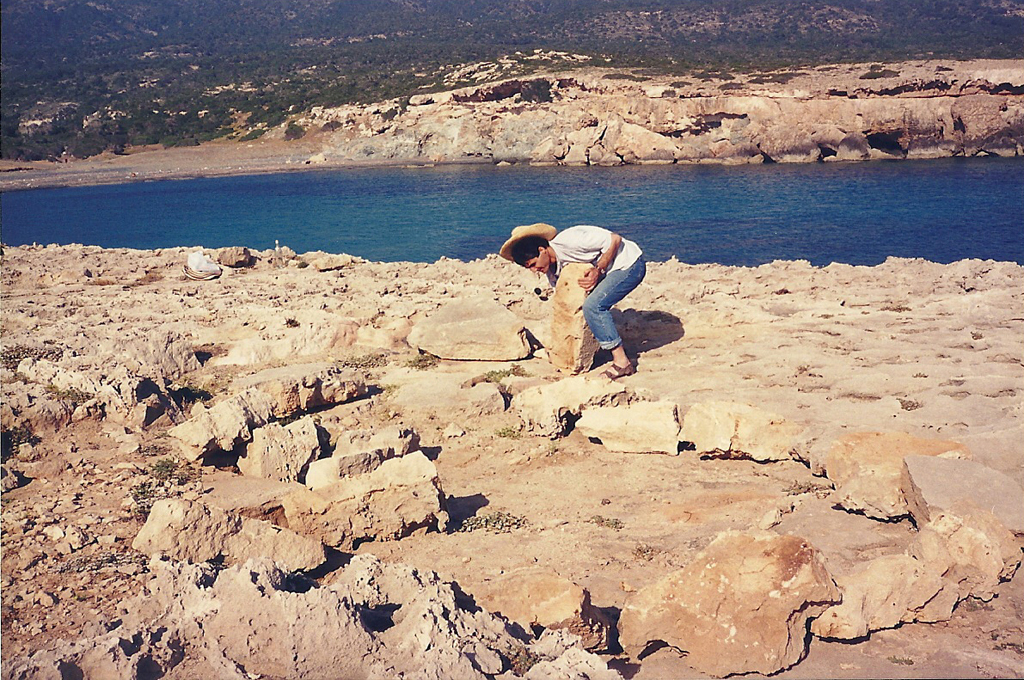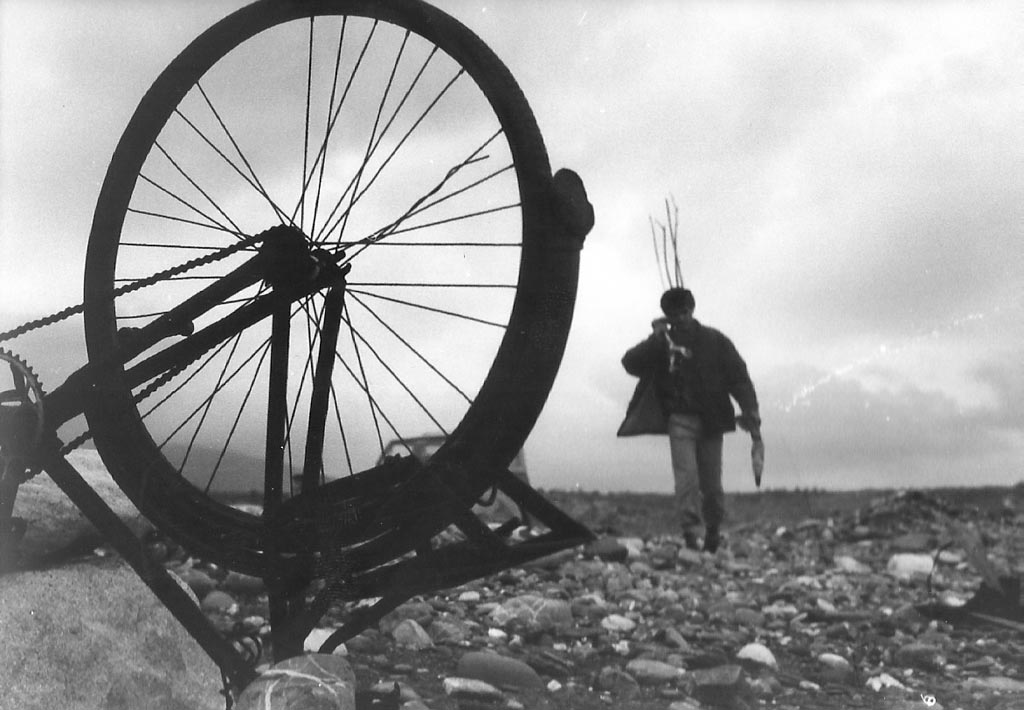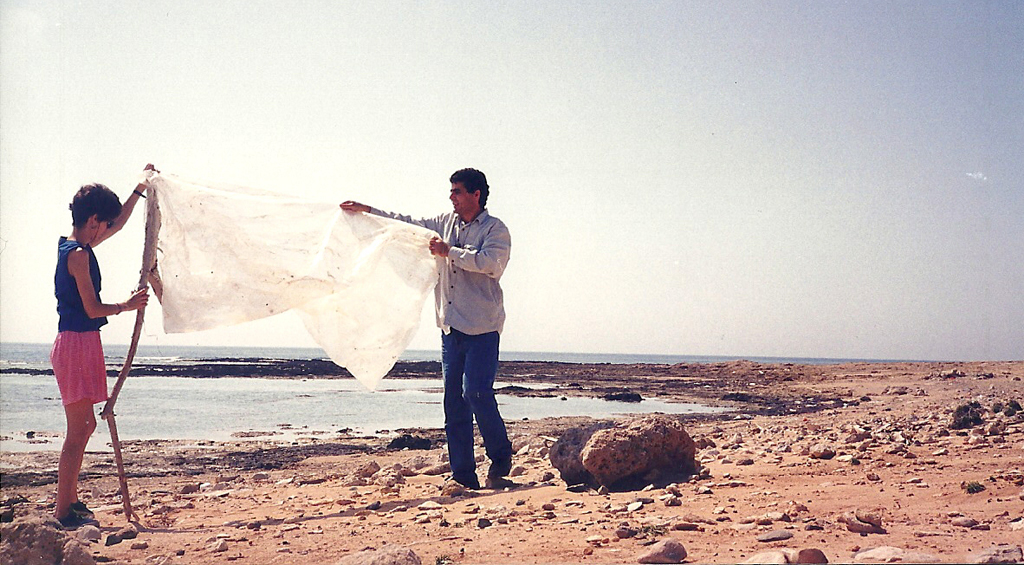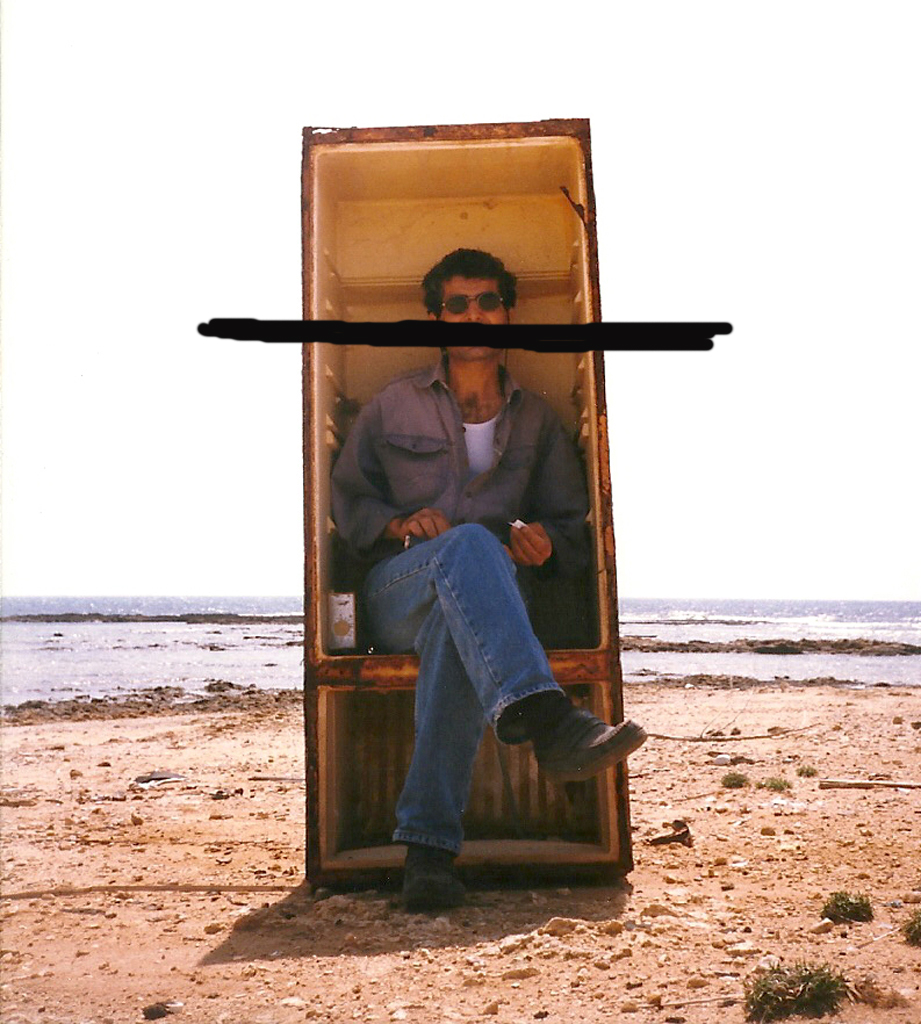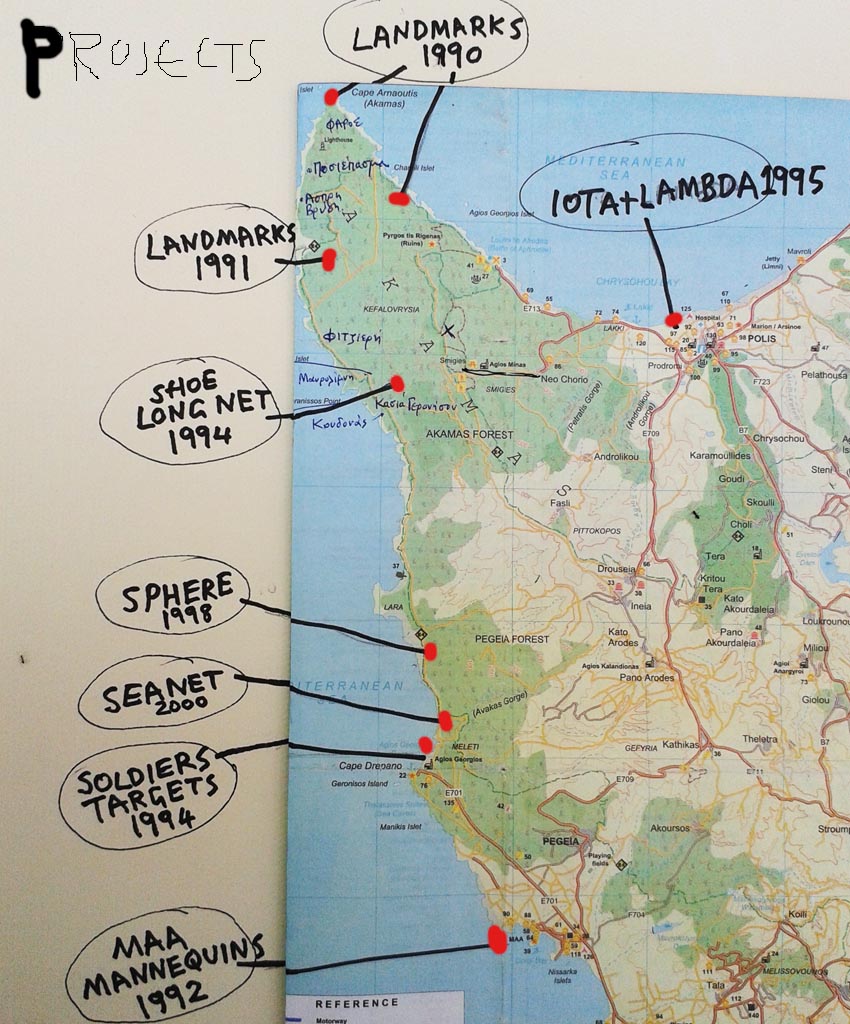Landmarks are the first installations and happenings in the Akamas area by Rinos Stefani and Susan Vargas in 1990. Those works were of a spontaneous character; something between a ritualistic game and land art. Soon after Landmarks in Akamas, Stefani developed his Praxis happenings. The two artists chose the specific area because of its special characteristics. Akamas is the last coastal area on Cyprus to remain largely untouched by mass tourism and development. Its precious ecology makes it unique for Cyprus, and for the whole of the Mediterranean. Yet, this unique beauty of Akamas is fragile and remains under threat.
Not to mention that until the year 2000, the British Army and Navy were using Akamas for military exercises and as a firing range. Under the 1960 Treaty of Establishment, the British Army can use the Akamas for exercises for up to 70 days a year. Akamas covers about 230 square km and is located on the western tip of Cyprus.
Rinos Stefani during that period had close ties with the Green movement in Cyprus. He participated in several protests against developing Akamas as well as the demilitarization of the peninsula. Stefani and Vargas found this contradiction – nature and destruction – disturbing and interesting.
Susan Vargas:Landmarks were confused with satanists
Susan Vargas writes: I started working with Rinos Stefani for the first time doing the Landmarks, in the Akamas area, Cyprus in 1990. We made Earth and site works, using wood, stones, bones and any material available. Some of the works were “discovered” by fishermen, shepherds and various “experts”. Some friends of ours told us that our works were on TV. The interesting thing was that all local people confirmed to the journalists that these were works by satanists!
Happenings, Performances, Earth and site works, Environmental Art etc. arose in Europe and America in the 1960s. In Cyprus, however, until 1990 very few artists had been engaged in these kinds of art. Rinos Stefani introduced his Praxeis – a combination of installation with performative elements – in 1990. In 1991 he did the performance Praxis with Earth in Nicosia, probably the first art performance in Cyprus. Rinos chose the name “Praxeis” to emphasize the priority of action over theory.
Rinos Stefani starts his Praxeis happenings
After Landmarks Rinos embarks on his various Praxeis happenings. In October 1991, he presented the installation Mannequins at the ancient Tombs of the Kings, Paphos. In July 1992 he did the happening Maa-Mannequins at Coral Bay beach in Paphos, in which he placed 20 plastic, life-size dolls among the bikini-clad crowd. He showed the installation Mousetraps at Famagusta Gate, Nicosia, in 1993 and soon after to the Kyrenia Castle. During a journey to Latin America, in July 1993, he realized the Praxis Osoguaico. This was in San Agustin, in the Andes of Colombia. Rinos’s most known Praxis is the installation Soldiers-Targets.
The Targets and other Praxeis
In May 1994, during an exhibition at Famagusta Gate, Nicosia, three of the Soldiers – Targets were stolen. This incident fed the media with “polemic” material. It elicited varied reactions from the Police, the Nicosia Municipality, the Chamber of Fine Arts, the Ministry of Education and Culture etc. Among the most tragicomic aspects of this case were the various testimonies that Rinos had to give to the Police. Since then, the “Soldiers-Targets case” remains partly unsolved in the files of the Criminal Investigation Department, under record number Σ/744/94.
I remember we were doing an installation in Akamas when some officers from the Forestry Department asked us to stop immediately. They said we didn’t have permission to collect trash!
In the summer of 2005, Rinos travelled to the Amazon River and realised the Praxis Ama – Zon, in the area where three countries – Colombia, Peru and Brazil – meet.
The above are only some of Rinos Stefani’s Praxeis. And each Praxis is accompanied by countless details, which perhaps constitute the real, dynamic relationship between the artwork and the public. In essence, this is the meaning of Praxeis: The redefinition of the relationship between the work of art and the viewer. In any event, Rinos manages to involve the public in his Praxeis. And he achieves this because he invents and uses ambiguous images, which are imbued with power, sarcasm and humor.
Text from the publication “Rinos Stefani, Acrobats” 2008
